Introduction
For anyone working either in the Digital Marketing space, or works with people and companies that do so on their behalf, they’ll find they run into what you could see as ‘fog’ when it comes to steering a business, or business function, in the right direction.
This article is aimed to help lift the fog through greater clarification of the nature of ‘water’ you are navigating.
The 5 levels - overview
Just as there are 5 levels to Digital Organisation within this Digital Cybernetic framework, we can apply the same principle to Digital Marketing more specifically.
Here is an overview of the levels:
Level 1 - disconnected systems
Level 2 - connected systems with (primarily) ‘one-way transfer’ of information
Level 3 - connected systems with (primarily) ‘two-way transfer’ of information
Level 4 - connected ‘goal directed systems’ with (primarily) two-way transfer of information
Level 5 - ‘connectedly intelligent’ goal based systems with (primarily) two-way transfer of information
What these 5 levels mean for Digital Marketing?
Below is a basic map of the process of digital marketing attribution, based on each source.
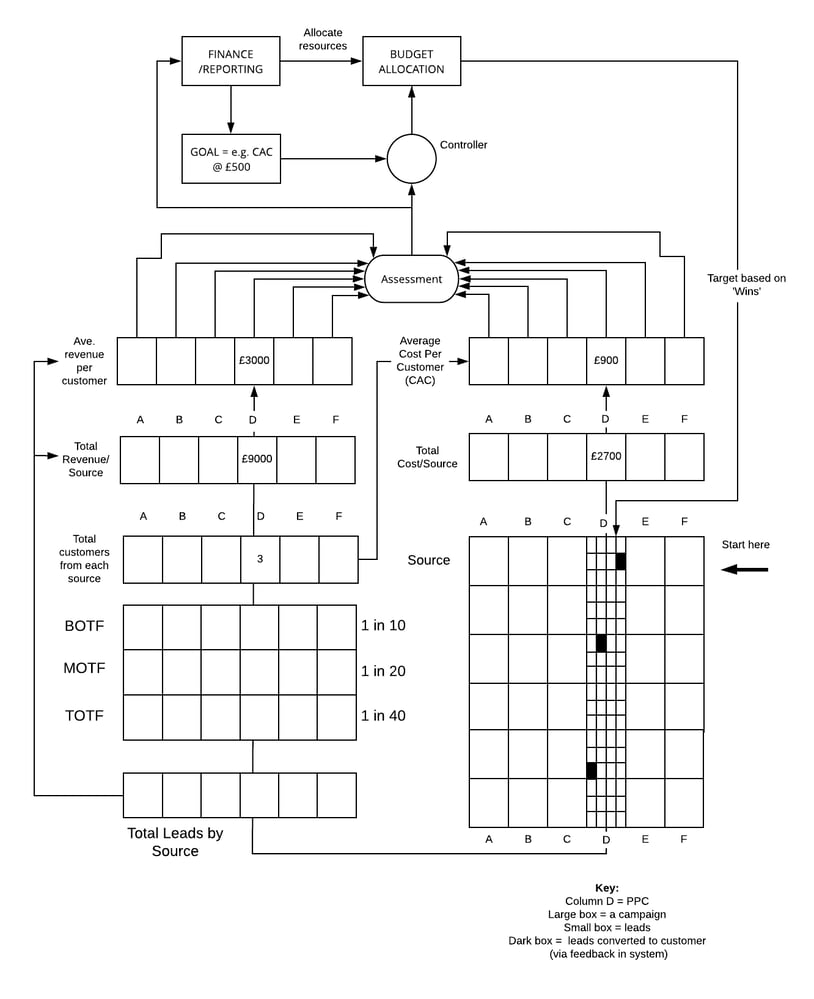
Note: this is based on a premise of lead generation, not e-commerce (which is easier to attribute within the advertising platform itself).
If you consider it from a systems perspective, we can apply the 5 levels as follows:
Level 1 - disconnected systems
This is a common situation where the Source data (e.g. conversions in Facebook/Adwords/Twitter, using the example of Pay Per Click advertising) are not connected to ‘where the leads land’. The usual case is that a web form generates an email that is sent to a salesperson to follow up. In other words, as soon as the ‘ball is passed’ to the sales team the historic journey is effectively forgotten.
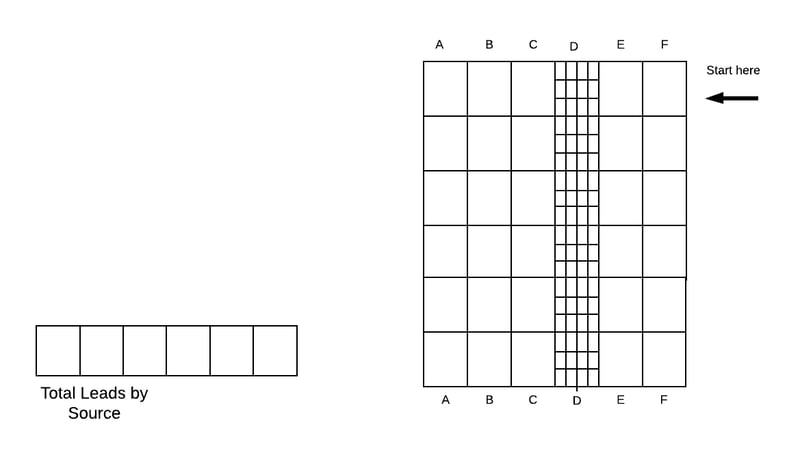
Level 2 - connected systems with (primarily) ‘one-way transfer’ of information
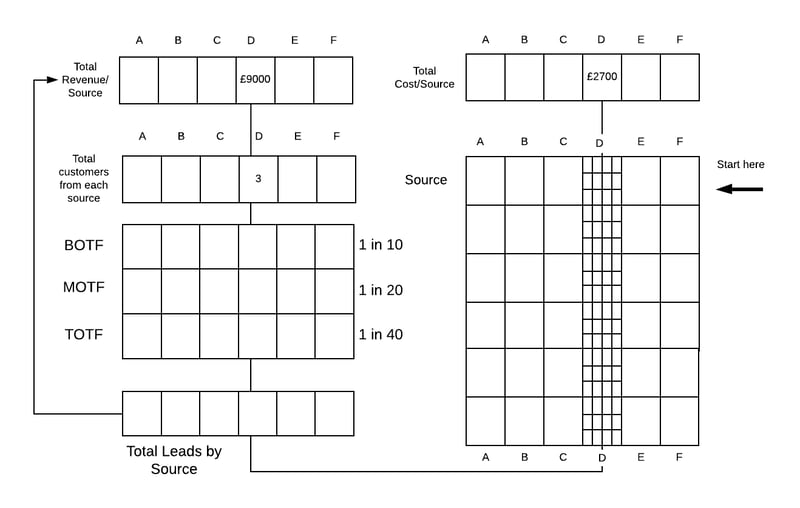
The next level connects the source of the leads to their status.
This level allows for ease of segmentation not just as to the source of the leads, but also the nature of the leads e.g. the stage of the funnel to which they initially belong.
In other words, the data from the source of e.g. organic can easily be attained down to the level of the page and webform that has yielded the result.
There isn’t, however, a feedback loop that ‘informs’ the original source as to what to ‘do’ to yield better results.
Level 3 - connected systems with (primarily) ‘two-way transfer’ of information
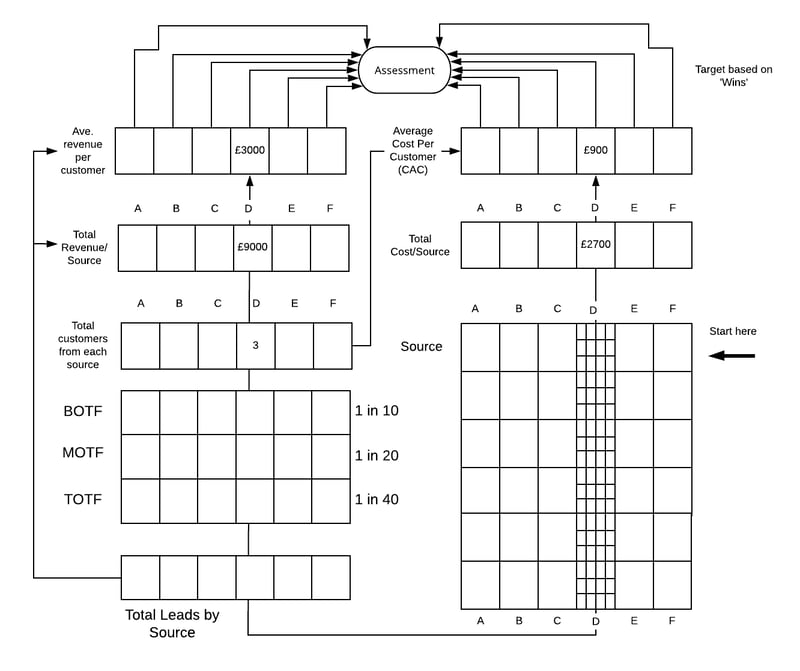
This level is the one where the business has taken a true leap - there is a connect of ‘source’ to ‘results’ - which in turn surfaces where you are getting the wins, and the areas from which you need to either attempt to get improvements, or remove budget.
This level gives you granularity of attribution i.e. you can see exactly what is and isn’t working - and it also calculates the cost of acquisition of a new customer. It doesn’t, however, reflect the true costs of running the system as is isolated to the data to which it connects.
I cannot stress this enough, unless a business takes the step to connect their customer data to their source data (e.g. which Top of the Funnel assets, opted in from which website pages, are converting people into customers - not just leads), they will NEVER be able to understand how to effectively optimise their marketing efforts. Without feedback you will fail to see what is working, and what isn’t.
Level 4 - connected ‘goal directed systems’ with (primarily) two-way transfer of information
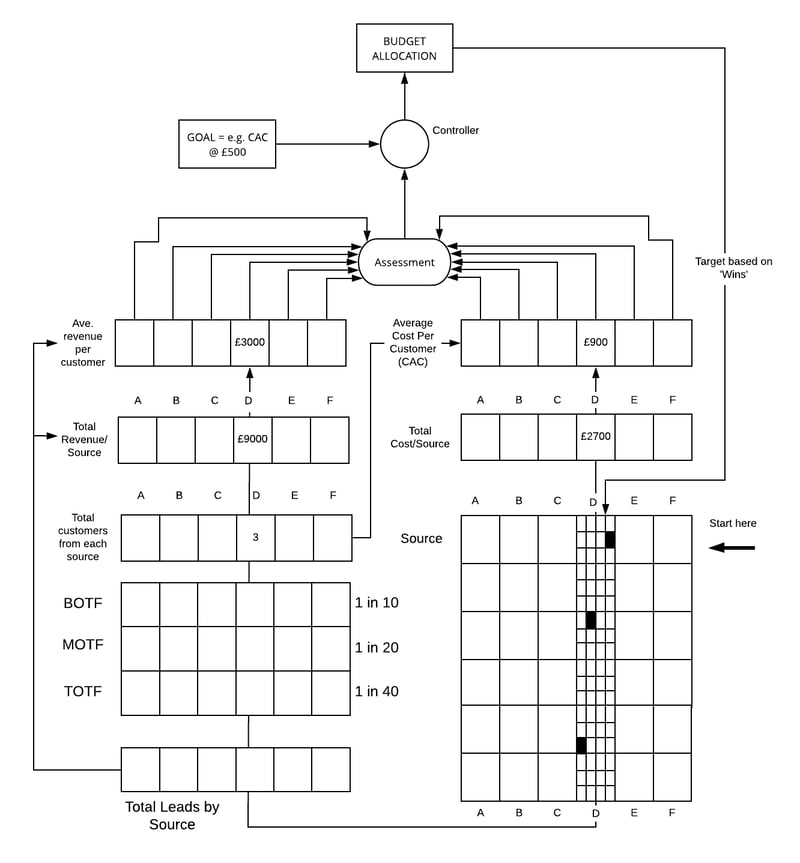
This level has broader ‘intelligence’ driving toward a goal.
The controller will look at the connected data from the system, as is available from the connected systems, and make a decision as to what to allocate resources.
Knowing the goal is e.g. a lower CAC than the system is currently providing, the controller will operate the ‘levers’ they have available in order to move in the direction of this target CAC.
There are several challenges for businesses operating at this level, including:
The skills of the controller to ‘see’ and adjust course
The ability of the controller to influence directly the other parties who may be involved in different aspects of the system (e.g. working with 3rd parties)
The lack of complete knowledge as to the ‘real costs’ of the activities being undertaken.
It is this last point in particular that remains in the realm of the Finance department, and one that needs to be built into the target CAC figure - without it, the operator is attempting to optimise within a false reality.
Level 5 - ‘connectedly intelligent’ goal based systems with (primarily) two-way transfer of information
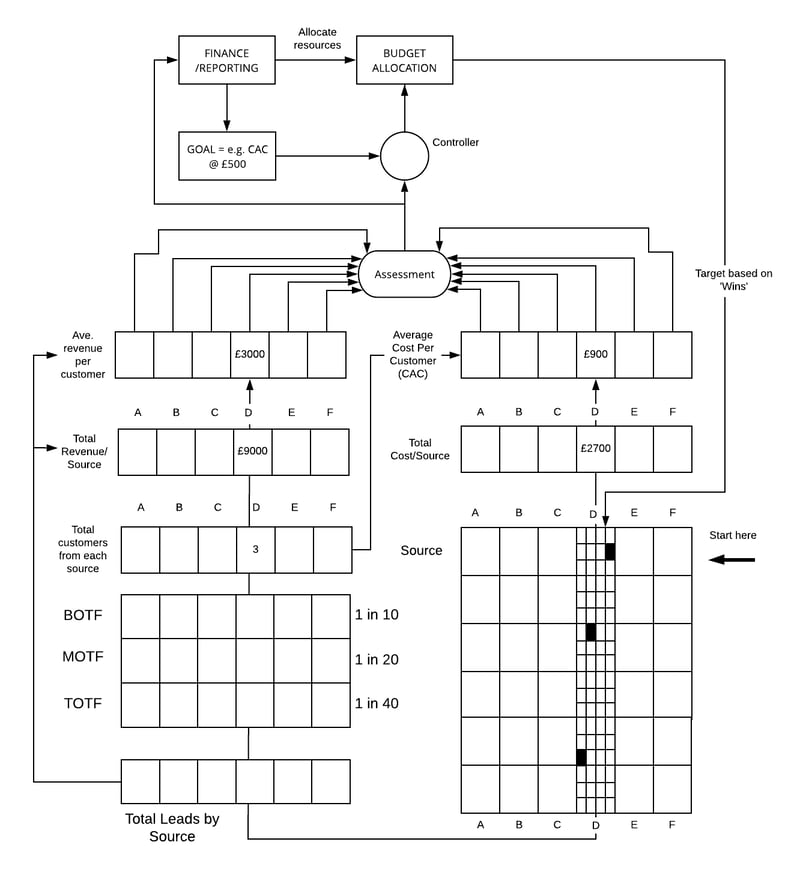
This Level solves the issues of the previous one as it has a complete perspective as to the costs and revenues across the function.
With built in intelligence, the controller is ‘guided’ to act by the system through a series of notifications that will inform which areas are to be resourced or ‘starved’, and additional budget acquired where necessary to scale efforts.
Even though one can intuit this level working perfectly with an Ai operator in the future, it is still perfectly valid to think of a human operator working the levers - they simply need to have a framework that allows for their actions to be guided by the real figures determined through the process of reporting by the Finance team.
How to move between Levels
A movement between levels requires a shift in the meaning making of the machinery. This we can equate, in the most rudimentary way, to ‘intelligence of the system’ - moving from disconnected source to customer data, through to the ability to attribute based all the way down to the keyword, through to the higher levels of ‘understanding’ as to what this really means re: allocation of budgets.
The reality is, you need to have your customer data in one place - a hub - with all the connected ad platforms (and other sources e.g. organic traffic) as the spokes feeding in.
The move from Level 1 to Level 2 comes through the implementation of a database - but the shift to Level 3 is what a professional business actually needs i.e. see in detail what activities, and associated spend, are leading to customers (i.e. sales) and what are not. Without this shift you will always be blind as to real ROI.
Then from there, the shift to Level 4 is when ‘real costs’ are built into the system’s goals, before Level 5 automates further and has built in triggers when a threshold is met, and in turn allocates the budget.
The role of HubSpot
Here is a glimpse at the evolution from one level to the next:

HubSpot solves the problem for moves from Level 1 to 2 through implementing the free CRM, and then having sufficient segmentation through ‘lists’ - this can be through a Starter purchase (e.g. £42 a month). Level 2 to 3 connects Customer to Source requires the leap to PRO account (starting at Marketing PRO for circa £655 a month).
Levels 4 and 5 are where Plus Your Business! really comes into its own - we support your business becoming more intelligent, so you can steer the course more efficiently, and effectively.
As Dan Tyre (#6 employee at HubSpot) said of our process maps, “it looks like you are leveraging science & math to understand the best way to improve your yield- that is what a modern smarketer ( Sales + Marketing professional) does to provide a client competitive advantage.” And that is exactly what we are doing.
Finally…
On this basis, the regulatory function within the business should be owned by the Finance department, based upon all the available data. With their input, the budgets can be set based upon the likelihood of success of resourcing particular areas of the business.
For the finance team to perform this function, the sales and marketing functions need to operate ‘as one’ i.e. are working toward providing evidence that can then be verified by the finance team. This sounds like it should be easy, but due to the evolution of systems being added to systems over 10s of years, it isn’t. This is the problem Plus Your Business! solves - we apply a scientific approach to your business, which will help you perform ‘The Art of Steering’ with far greater ease than you might be able to imagine.
.png)
Introduction
For anyone working either in the Digital Marketing space, or works with people and companies that do so on their behalf, they’ll find they run into what you could see as ‘fog’ when it comes to steering a business, or business function, in the right direction.
This article is aimed to help lift the fog through greater clarification of the nature of ‘water’ you are navigating.
The 5 levels - overview
Just as there are 5 levels to Digital Organisation within this Digital Cybernetic framework, we can apply the same principle to Digital Marketing more specifically.
Here is an overview of the levels:
Level 1 - disconnected systems
Level 2 - connected systems with (primarily) ‘one-way transfer’ of information
Level 3 - connected systems with (primarily) ‘two-way transfer’ of information
Level 4 - connected ‘goal directed systems’ with (primarily) two-way transfer of information
Level 5 - ‘connectedly intelligent’ goal based systems with (primarily) two-way transfer of information
What these 5 levels mean for Digital Marketing?
Below is a basic map of the process of digital marketing attribution, based on each source.

Note: this is based on a premise of lead generation, not e-commerce (which is easier to attribute within the advertising platform itself).
If you consider it from a systems perspective, we can apply the 5 levels as follows:
Level 1 - disconnected systems
This is a common situation where the Source data (e.g. conversions in Facebook/Adwords/Twitter, using the example of Pay Per Click advertising) are not connected to ‘where the leads land’. The usual case is that a web form generates an email that is sent to a salesperson to follow up. In other words, as soon as the ‘ball is passed’ to the sales team the historic journey is effectively forgotten.

Level 2 - connected systems with (primarily) ‘one-way transfer’ of information

The next level connects the source of the leads to their status.
This level allows for ease of segmentation not just as to the source of the leads, but also the nature of the leads e.g. the stage of the funnel to which they initially belong.
In other words, the data from the source of e.g. organic can easily be attained down to the level of the page and webform that has yielded the result.
There isn’t, however, a feedback loop that ‘informs’ the original source as to what to ‘do’ to yield better results.
Level 3 - connected systems with (primarily) ‘two-way transfer’ of information

This level is the one where the business has taken a true leap - there is a connect of ‘source’ to ‘results’ - which in turn surfaces where you are getting the wins, and the areas from which you need to either attempt to get improvements, or remove budget.
This level gives you granularity of attribution i.e. you can see exactly what is and isn’t working - and it also calculates the cost of acquisition of a new customer. It doesn’t, however, reflect the true costs of running the system as is isolated to the data to which it connects.
I cannot stress this enough, unless a business takes the step to connect their customer data to their source data (e.g. which Top of the Funnel assets, opted in from which website pages, are converting people into customers - not just leads), they will NEVER be able to understand how to effectively optimise their marketing efforts. Without feedback you will fail to see what is working, and what isn’t.
Level 4 - connected ‘goal directed systems’ with (primarily) two-way transfer of information

This level has broader ‘intelligence’ driving toward a goal.
The controller will look at the connected data from the system, as is available from the connected systems, and make a decision as to what to allocate resources.
Knowing the goal is e.g. a lower CAC than the system is currently providing, the controller will operate the ‘levers’ they have available in order to move in the direction of this target CAC.
There are several challenges for businesses operating at this level, including:
The skills of the controller to ‘see’ and adjust course
The ability of the controller to influence directly the other parties who may be involved in different aspects of the system (e.g. working with 3rd parties)
The lack of complete knowledge as to the ‘real costs’ of the activities being undertaken.
It is this last point in particular that remains in the realm of the Finance department, and one that needs to be built into the target CAC figure - without it, the operator is attempting to optimise within a false reality.
Level 5 - ‘connectedly intelligent’ goal based systems with (primarily) two-way transfer of information

This Level solves the issues of the previous one as it has a complete perspective as to the costs and revenues across the function.
With built in intelligence, the controller is ‘guided’ to act by the system through a series of notifications that will inform which areas are to be resourced or ‘starved’, and additional budget acquired where necessary to scale efforts.
Even though one can intuit this level working perfectly with an Ai operator in the future, it is still perfectly valid to think of a human operator working the levers - they simply need to have a framework that allows for their actions to be guided by the real figures determined through the process of reporting by the Finance team.
How to move between Levels
A movement between levels requires a shift in the meaning making of the machinery. This we can equate, in the most rudimentary way, to ‘intelligence of the system’ - moving from disconnected source to customer data, through to the ability to attribute based all the way down to the keyword, through to the higher levels of ‘understanding’ as to what this really means re: allocation of budgets.
The reality is, you need to have your customer data in one place - a hub - with all the connected ad platforms (and other sources e.g. organic traffic) as the spokes feeding in.
The move from Level 1 to Level 2 comes through the implementation of a database - but the shift to Level 3 is what a professional business actually needs i.e. see in detail what activities, and associated spend, are leading to customers (i.e. sales) and what are not. Without this shift you will always be blind as to real ROI.
Then from there, the shift to Level 4 is when ‘real costs’ are built into the system’s goals, before Level 5 automates further and has built in triggers when a threshold is met, and in turn allocates the budget.
The role of HubSpot
Here is a glimpse at the evolution from one level to the next:

HubSpot solves the problem for moves from Level 1 to 2 through implementing the free CRM, and then having sufficient segmentation through ‘lists’ - this can be through a Starter purchase (e.g. £42 a month). Level 2 to 3 connects Customer to Source requires the leap to PRO account (starting at Marketing PRO for circa £655 a month).
Levels 4 and 5 are where Plus Your Business! really comes into its own - we support your business becoming more intelligent, so you can steer the course more efficiently, and effectively.
As Dan Tyre (#6 employee at HubSpot) said of our process maps, “it looks like you are leveraging science & math to understand the best way to improve your yield- that is what a modern smarketer ( Sales + Marketing professional) does to provide a client competitive advantage.” And that is exactly what we are doing.
Finally…
On this basis, the regulatory function within the business should be owned by the Finance department, based upon all the available data. With their input, the budgets can be set based upon the likelihood of success of resourcing particular areas of the business.
For the finance team to perform this function, the sales and marketing functions need to operate ‘as one’ i.e. are working toward providing evidence that can then be verified by the finance team. This sounds like it should be easy, but due to the evolution of systems being added to systems over 10s of years, it isn’t. This is the problem Plus Your Business! solves - we apply a scientific approach to your business, which will help you perform ‘The Art of Steering’ with far greater ease than you might be able to imagine.

-1.png?width=662&name=Digital%20Cybernetics%20for%20Digital%20Marketers%20(1)-1.png)

